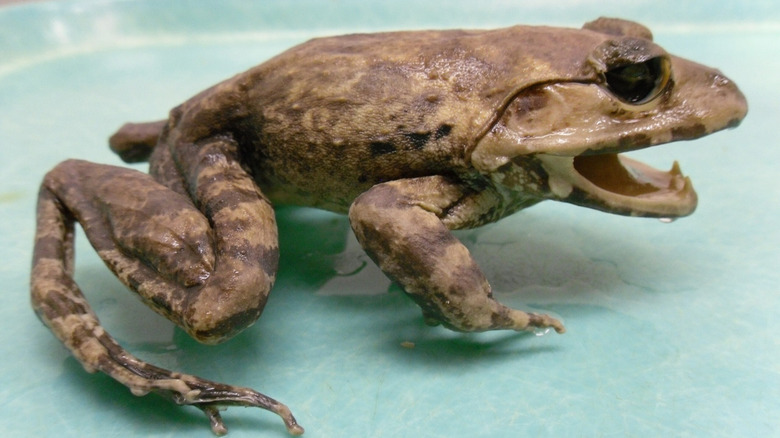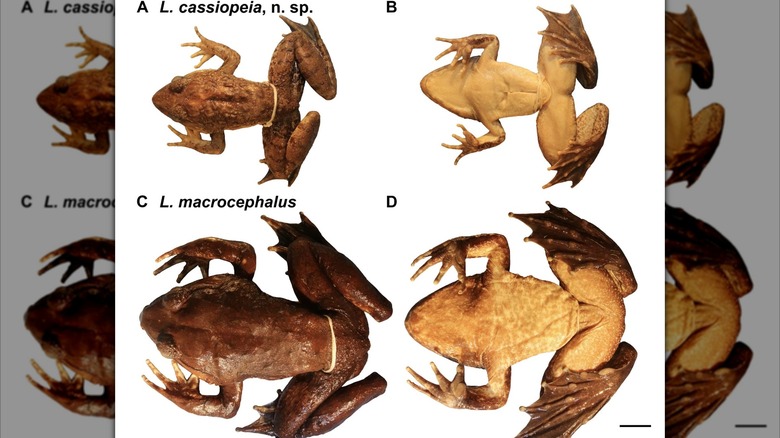A New Fanged Animal Species Discovered In 2024 Has Two Unique Traits
Scientists discover new species all the time. In fact, several new animal species were discovered in 2024 and among them was a new species of fanged frog: Limnonectes cassiopeia. The finding was published in the journal Ichthyology & Herpetology, and the researchers identified two traits that make it stand out from the Luzon fanged frog (L. macrocephalus) which it had previously been identified as and with which it shares a common range.
University of Kansas researchers found the new frog on the island of Luzon in the Philippines while performing a wider genetic survey of fanged frog species in the region. Mark Herr, the lead author of the study and a doctoral student at the Biodiversity Institute and Natural History Museum at the University of Kansas, explained in a statement, "In Luzon, there were two known species of fanged frogs: Limnonectes macrocephalus, the large one, and a medium-sized one called Limnonectes woodworthi. However, I discovered a different group next to macrocephalus that appeared in the genetic data as a distinct branch."
Upon further investigation, Herr and his team saw that this particular species has smaller toe pads which were white and completely unpigmented — a stark contrast to the dark gray pigment of L. macrocephalus. Because of that, anyone who picks up this fanged frog in the wild will be able to identify it just by turning it over and looking at the bottom of its feet. Another major difference is that the head of the L. cassiopeia grows faster than its relatives, becoming characteristically large and wide when the body is smaller overall.
Limnonectes cassiopeia went unnoticed for quite some time
While the unique traits of L. cassiopeia make it stand out from others in its genus, this species went unnoticed for quite a while because of its similarities to L. macrocephalus. It's actually common for new species to be hiding in plain sight. Scientists in Texas found a new species of wasp hiding under their noses, and in south-east Asia, scientists discovered a new species of catfish weighing up to 220 pounds. And that's to say nothing of the more than 20 new species of Limnonectes frogs that have been described since 2020.
Herr explained that physical descriptions were previously the only identifiers of these fanged frog species because modern genetic analysis wasn't available when they were originally discovered. Without genetics to prove otherwise, L. cassiopeia was mistaken as juvenile L. macrocephalus while being collected for the last two decades. He only came across the new species during genetic sequencing to establish a solid dataset to examine relationship patterns. The results indicated that the Luzon fanged frogs evolved independent of L. cassiopeia.
The fanged frogs on Luzon island are nicknamed Luzon fanged frogs because the males have large, bony protrusions in their lower jaws — similar to fangs. The females have fangs, too, but they're noticeably smaller. In either case, it's believed that the fangs are for fighting, judging by the scars on the tops of their heads, but no one really knows for sure.

